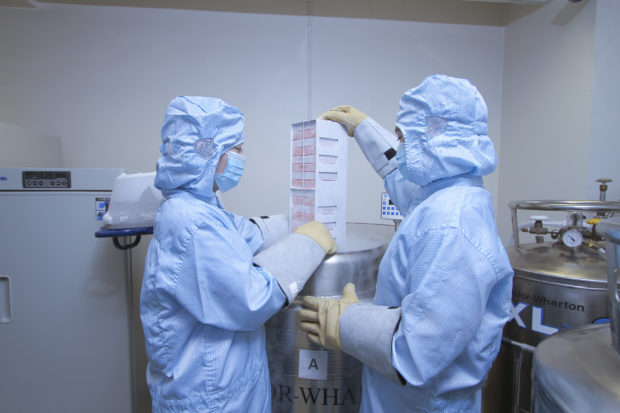Why might a child need bone marrow transplant?
For some children with cancer and blood disorders, a bone marrow transplant (BMT) can be their best hope to beat the condition.
According to the World Health Organization (WHO), the most common categories of childhood cancers include leukemias and lymphomas.
The most common pediatric cancer in the Philippines is acute lymphoblastic leukemia. Signs and symptoms of this illness in children include anemia, bruising or bleeding, bone and joint pain, recurrent fevers and or infections, abdominal pain, swollen lymph nodes, and difficulty breathing.
Fortunately, bone marrow transplant is offered here in the Philippines – a life-saving procedure to treat blood-borne cancers such as leukemia and lymphoma in children.
The Medical City has been working on its Bone Marrow Transplant program since 2012 through its Regenerative Medicine Laboratory, the Institute of Personalized Molecular Medicine (IPMM), and the Augusto P. Sarmiento Cancer Institute (APSCI). The goal of this program is to cure diseases and certain types of blood cancer in children at the same time reduce transplant-associated morbidity and mortality through novel approaches to patient care.
Since 2016, TMC has performed the procedure a total of 45 times.
TMC now offers new hope to patients up to 19 years old in need of BMT. At the helm of this program is pediatric hematologist Dr. Anna Marie Espaldon who has undergone training in bone marrow transplant at the Hualien Tzu Chi Hospital in Taiwan.
BMT, also called hematopoietic stem cell transplant, treats serious diseases through a process that destroys the patient’s damaged immune system and replaces it with healthy stem cells. The new stem cells restore the blood-forming cells of the bone marrow, leading to a new immune system in the patient’s body.

The cryogenic tank where stem cells are stored
There are two major types of BMT – autologous and allogeneic. The type that a child will receive depends upon his or her diagnosis. An allogeneic transplant is performed when bone marrow or blood cells are received from a donor other than the patient, usually from a related donor, unrelated donor, or cord blood. This type of transplant is used for patients with leukemias and some lymphomas.
An autologous transplant is performed when the patient’s own bone marrow or blood cells are used. This type of transplant is used for patients with solid tumors such as neuroblastoma, Hodgkin disease, and brain tumors.
Current indications of bone marrow transplant in children
According to Stanford Children’s Health, a leading hospital in the US dedicated to pediatric care, pediatric BMT can be used to replace diseased bone marrow with healthy bone marrow. This is done for conditions such as leukemia and aplastic anemia.
For diseases like lymphoma and solid tumors like brain cancer and neuroblastoma, the procedure can replace bone marrow after high doses of chemotherapy or radiation are given, a process often called rescue instead of transplant.
Pediatric BMT can likewise replace bone marrow with healthy bone marrow to prevent more damage from a genetic disease. This is done for diseases such as thalassemia, primary immunodeficiencies, metabolic and genetic diseases and Hurler syndrome.
The pediatric patient’s transplant is managed by a team of specialists that includes doctors who specialize in oncology, hematology, infectious disease, immunology, and bone marrow transplant and transplant nurse coordinator supported by allied medical professionals.
For more information about The Medical City Bone Marrow Transplant Program, contact 8-9881000 ext. 6551.
ADVT.